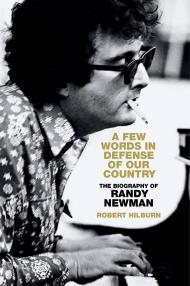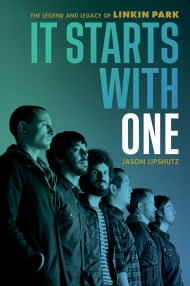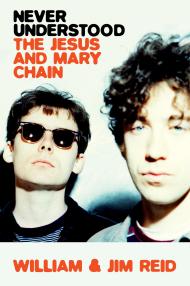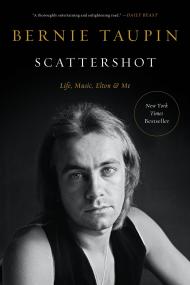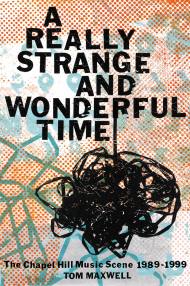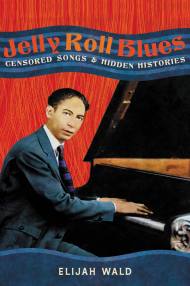Shopping Cart
From the Streets of Shaolin
The Wu-Tang Saga
Description
This definitive biography of rap supergroup, Wu-Tang Clan, features decades of unpublished interviews and unparalleled access to members of the group and their associates.
This is the definitive biography of rap supergroup and cultural icons, Wu-Tang Clan (WTC). Heralded as one of the most influential groups in modern music—hip hop or otherwise—WTC created a rap dynasty on the strength of seven gold and platinum albums that launched the careers of such famous rappers as RZA, GZA, Ol’ Dirty Bastard, Raekwon, Ghostface Killah, Method Man, and more. During the ‘90s, they ushered in a hip-hop renaissance, rescuing rap from the corporate suites and bringing it back to the gritty streets where it started. In the process they changed the way business was conducted in an industry known for exploiting artists. Creatively, Wu-Tang pushed the boundaries of the artform dedicating themselves to lyrical mastery and sonic innovation, and one would be hard pressed to find a group who’s had a bigger impact on the evolution of hip hop.
S.H. Fernando Jr., a veteran music journalist who spent a significant amount of time with The Clan during their heyday of the ‘90s, has written extensively about the group for such publications as Rolling Stone, Vibe, and The Source. Over the years he has built up a formidable Wu-Tang archive that includes pages of unpublished interviews, videos of the group in action in the studio, and several notepads of accumulated memories and observations. Using such exclusive access as well as the wealth of open-source material, Fernando reconstructs the genesis and evolution of the group, delving into their unique ideology and range of influences, and detailing exactly how they changed the game and established a legacy that continues to this day. The book provides a startling portrait of overcoming adversity through self-empowerment and brotherhood, giving us unparalleled insights into what makes these nine young men from the ghetto tick. While celebrating the myriad accomplishments of The Clan, the book doesn’t shy away from controversy—we’re also privy to stories from their childhoods in the crack-infested hallways of Staten Island housing projects, stints in Rikers for gun possession, and million-dollar contracts that led to recklessness and drug overdoses (including Ol’ Dirty Bastard’s untimely death). More than simply a history of a single group, this book tells the story of a musical and cultural shift that started on the streets of Shaolin (Staten Island) and quickly spread around the world.
Biographies on such an influential outfit are surprisingly few, mostly focused on a single member of the group’s story. This book weaves together interviews from all the Clan members, as well as their friends, family and collaborators to create a compelling narrative and the most three-dimensional portrait of Wu-Tang to date. It also puts The Clan within a social, cultural, and historical perspective to fully appreciate their impact and understand how they have become the cultural icons they are today. Unique in its breadth, scope, and access, From The Streets of Shaolin is a must-have for fans of WTC and music bios in general.
What's Inside
Preface
“I smoke on the mic like ‘Smokin’ Joe’ Frasier / The Hellraiser, raising hell with the flavor.” When Inspectah Deck launched into his iconic opening lines from “Protect Ya Neck” during a 2018 Wu-Tang Clan performance on Jimmy Kimmel Live!, I couldn’t help but crack a smile and feel the goosebumps rising. The nine MCs gliding smoothly and nonchalantly across the stage, now grown men in their late forties and early fifties, were still doing it—maybe not with as much gusto as twenty-five years earlier, but the ecstatic crowd was loving it, and so was I. Flashbacks of the Clan’s record release party at New York’s Webster Hall in November 1993—the world premiere of these grimy, young upstarts from the mysterious shores of Staten Island—replayed in my mind. Like a title bout, the place was packed to the rafters with industry types and media, along with a colorful assortment of playas, hustlers, floozies, and a who’s who of New York’s hip-hop massive, who turned out to fete the crew behind “Protect,” a breakout street hit that had dominated rap’s collective consciousness for most of the year. As Wu-Tang swarmed the stage with what seemed like half their housing projects, no one even knew who was in the group until they started rhyming. No question, they brought one hell of a ruckus that night, putting Staten Island, or Shaolin, as they called it, on the map. Their unveiling also marked the beginning of a new chapter in hip-hop—the Wu era.
Emerging from New York’s forgotten borough, the original nine-man collective hit like a Scud missile with Enter the Wu-Tang: 36 Chambers (Loud/RCA, 1993), an explosive debut that permanently altered the rap landscape. Hijacking the charts with a raw, underground sound and storming the gates of the music industry like Attila’s hordes, the Clan kept on coming with an unrelenting assault of solo releases that furthered their choke hold on rap between 1993 and 1997. Today, with over forty million records sold worldwide, music attests to only part of their epic saga. At this point, it’s fair to say they have even transcended the rap game, claiming their place in the cultural zeitgeist.
Man for man, the nine unique personalities of Wu-Tang, each oozing with witty, unpredictable talent and natural game, composed an all-star lineup never before seen in hiphop. But the chemistry they exhibited as a team was what made them truly special. Commercial success almost overshadowed the fact that one of the main reasons they received so much love was that they represented the underdog everywhere, defying insurmountable odds to make it to the top. Even their whole DIY approach, which was grass roots and underground, made their impact on the mainstream all the more impressive. For generations of youth who grew up under the full sway of hip-hop in the seventies, eighties, and nineties, they are our equivalent of the Beatles or the Rolling Stones.
The Clan first appeared on my radar in October 1992, before “Protect Ya Neck” started tearing up the underground. After a year of barrio living in Manhattan’s Spanish Harlem while working on my master’s degree at the Columbia School of Journalism, I had just made the move to Williamsburg, Brooklyn—at the time, a Shangri-la of artists, eccentrics, and delinquents, all drawn by the immense but affordable industrial spaces. One night, a college buddy, Jon Shecter, came over to check out the new digs. Along with fellow classmate Dave Mays, he had started hip-hop’s premier publication, The Source, which gave me my first byline. Coming straight from the new Source offices on lower Broadway, Shecter brought a cassette that had him pretty hyped. After rolling up the requisite blunt, we popped in the tape, and I heard those iconic karate chops that open “Protect Ya Neck” for the first of what was to be many times.
Over a galloping kick and snare beat, RZA cut up the siren-like saxophone wail that opened “The Grunt” by the J.B.’s—the same iconic sample that powered Public Enemy’s classic “Rebel Without a Pause”—to sinister effect. Random stabs of a guitar riff from LL Cool J’s classic “Rock the Bells” added some unexpected rock ’n’ roll swagger. Above the glorious mayhem, eight MCs with distinctly different styles and flows battled for our attention in a nonstop lyrical assault, uninterrupted by hooks. We had to rewind the tape a few more times to even catch some of their witty, intricate wordplay, which was heavy on the slang.
A couple of months later, in January 1993, Kid Capri played “Protect Ya Neck” for the first time on his mix show on WBLS. No doubt underground faves Stretch and Bobbito on WKCR and Funkmaster Flex on Hot 97 also helped break the single to a wider audience, but New York’s urban commercial powerhouse playing an independent release from a then-unknown, unsigned group proved to be a game changer for this ragtag outfit from Staten Island. Upon hearing “Protect Ya Neck” on the radio for the first time, Raekwon the Chef, who stands about five foot five, reportedly jumped so high, he almost hit his head on the ceiling. He probably had no idea that his life and those of his fellow clansmen and their families would never be the same again. Of course, neither would the world of music.
The opening salvo in the Wu revolution lit up the airwaves across the Rotten Apple. The antithesis of the slick, smooth-sounding G-funk of Dr. Dre and his disciples on the West Coast who dominated commercial radio and the charts, Wu-Tang’s gritty basement sound recalled hip-hop’s halcyon days. With roots reaching back into the Bronx bedrock, they were reclaiming rap for the city that started it all. You always knew what was hot on the streets from the sounds booming out of passing SUVs, and “Protect Ya Neck” ricocheted across the concrete canyons of Gotham like an emergency broadcast from hell. Taking a page from the DIY punk rock manual, as well as their own checkered past, the group pressed the single themselves, pushing it on the streets like a controlled substance. Well acquainted with the drug game, they applied that same kind of hustle to flipping product and moving units. By the time they got rid of that initial run of two thousand records, the major labels came calling.
Of course, Wu mastermind RZA had a plan. He had already been burned once by the music industry after being briefly signed and dropped as a solo artist by Tommy Boy. To do battle again in that cutthroat biz, he needed the support of his whole team. At the same time, he was aware that one record deal wouldn’t be enough to feed everyone. RZA’s genius, then, was signing the group as a single entity while retaining the rights to sign each individual member to solo deals with other labels—a practice unheard of at the time. It took a fairly new, unproven imprint called Loud Records to agree to such terms, but they paid the group only $60,000, a relative pittance by the standards of the day. The autonomy and creative control that RZA secured in return, however, to fully realize his vision proved to be priceless. Few records of that time can compare with 36 Chambers’ raw, dusted aesthetic, which in drug parlance represented that pure, uncut dope.
A few months after first hearing “Protect Ya Neck,” Loud contacted me to write a bio for the group. As a hip-hop journalist about to publish my first book, The New Beats: Exploring the Music, Culture, and Attitudes of Hip-Hop, I had pretty much interviewed all the major players in hip-hop by then. Yet my conversation with the RZA left an impression like a fatcap. Speaking to me by phone from his studio in Staten Island, he launched into an animated discussion about martial arts as a metaphor for the group’s lyrical prowess—that Wu-Tang was a sword style, and the sword represented a sharp tongue. “We flip flows like kung-fu and take niggas’ heads with our lyrics,” he told me in no uncertain terms. RZA was also heavily into numerology and kicked a lot of Five-Percenter jargon—though I was ignorant to it at the time—breaking down words and numbers into alternative meanings. In an art form filled with unique and memorable characters, he came off like some mystic, majestic magus from the slums. Behind thick ghetto slang compounded by a rhotacism, I clearly recognized someone of innate intelligence—the kind you don’t acquire at school—who was incredibly passionate and laser-focused on where he was going. A lot of rappers talk the talk, but I knew this guy was the real deal.
I finally met the RZA a few months later at Firehouse Studio in Manhattan. The group Gravediggaz, of which he was a member, was working on their first album, and their producer, Prince Paul, a friend of mine, had invited me down to voice a skit for the album, playing a crooked lawyer on the intro of a song called “Diary of a Madman.” I remember walking into the studio, proudly holding the January 1994 issue of The Source, hot off the press, featuring my first cover story on Das EFX—an issue that also happened to contain the magazine’s initial coverage of the Clan, whose album had just dropped. Raekwon, who was hanging out with a few guys, spotted the magazine in my hands and approached me holding a pair of garden shears with ten-inch blades. “Yo, kid, that the new joint?” he asked. “Let me peep that right quick.” Though I didn’t really know who Rae was at the time, I wasn’t about to argue with a guy holding those nasty-looking shears. Needless to say, I never got my copy of The Source back. But I did meet RZA, who struck me as incredibly humble and hungry. With an album on the verge of blowing up, he looked like he had just rolled off a park bench before coming to the studio. I mentioned our prior conversation for the press release for “Protect Ya Neck,” and he actually thanked me for writing it. Since graciousness was not a quality I usually associated with rappers, it confirmed what I already thought about him.
So began my long association with RZA and the group. My initial dealings with the “Abbot” of the Clan grew into a great rapport with him over the years as I wrote about Wu-Tang for such publications as The Source, Rolling Stone, Vibe, and many others. In addition to conducting multiple interviews with all the members between 1994 and 2002, I was lucky enough to be a fly on the wall as they worked on the first round of solo releases and their follow-up to 36 Chambers. During the making of Genius’s album, I was pulled out of my usual role as observer when RZA drafted me into playing the drug dealer, Mr. Grieco, on the skit that opens “Killah Hills 10304.”
Without much forethought, he simply told me, “Follow my lead,” and in a moment of adrenaline-pumping exhilaration, we acted out a deal gone bad. By the end of it, he was shouting at me, spittle flying, and even grabbing me by the throat for emphasis as GZA, Killah Priest, Dreddy Kruger, and Masta Killa crowded around. Masta Killa, incidentally, had just been in the news for punching friend and fellow journalist Cheo Coker in the face because he didn’t like the artwork that ran with Coker’s article on the Clan in Rap Pages, so I was already a little wary. Even though it felt like I was on the verge of a beatdown, I was somehow able to improvise my lines in a faux foreign accent. Thank God we nailed it in one take. As well as providing one hell of a story, the incident gave me an up close and personal look at the spontaneous and often unconventional methods the Clan used to create. Nothing was out of bounds, and there were no rules to any of it.
Though never compensated for my performance, I have enjoyed amazing access to the group over the years. I’ve been out to Staten Island numerous times and to the Wu Mansion in the woods of rural New Jersey, poking my video camera into the vocal booth while they were recording and taking a beating on the chessboard at the hands of GZA and Masta Killa. I joined the group in Los Angeles when they were working on Wu-Tang Forever, arriving the day after Notorious B.I.G. was gunned down. But, mostly, as a journalist I’ve just been around—to video shoots, live performances, studio sessions, award shows, and other events. I should note that interviewing anyone from the Clan is never a simple affair. Extreme tardiness is, of course, a given. I’ve spent entire days following RZA around town from record label offices to a chess game in the park to Indian restaurants to Sam Ash Music or B&H Photo in Midtown, and finally to the studio, where we might not get to talking until well past the witching hour. While most rappers spend their money on cars or jewelry, he once dropped $50,000 on an Avid video-editing system, paying for it with an American Express black card. I’ve seen him chop it up with a homeless bum one minute and then Richard Branson the next. Basically, it’s never a dull moment when you’re hanging with the Wu. During this time, I built up a formidable Wu archive, including pages of unpublished interviews, videos of the group in action in the studio, and several notepads of on-the-spot observations and accumulated memories.
Drawing on this wealth of exclusive material, as well as the bounty of open-source public information, I recount the Clan’s rise from humble beginnings to cultural icons in From the Streets of Shaolin: The Wu-Tang Saga. Wu-Tang, like hip-hop itself, represents a movement from the bottom that slowly and organically percolated to the top, constantly upping the ante on creativity, innovation, and originality and redefining music in the process. Beyond documenting their incredible rise, the book offers the most detailed and comprehensive look to date inside a true musical phenomenon, providing the social and cultural context to understand why Wu-Tang are as revered today as during their heyday in the nineties and how such a lasting and profound impact made them the greatest hip-hop group the world has ever known.
On a personal note, as a huge Wu fan myself, I have a far deeper relationship with their catalog than your average music journalist, and I approached this project not only with a commitment to truth and accuracy but also with the utmost love and respect. The Clan has seen me through many dark and difficult times. I remember one instance, in particular, when I was working for a media outfit in Iraq at the beginning of the war and living in a private residence outside the Green Zone. Our accommodations were rocked by a massive truck bomb that targeted the Australian Embassy next door. The first free elections since the ouster of Saddam were taking place at the end of the month, and insurgent violence was ratcheting up all over Baghdad. They were even threatening to close the airport, from which we hoped to make our escape. We didn’t know what was happening from one moment to the next, and the only thing that got me through those final hairy days was having Wu-Tang on repeat on my iPod. It was the perfect soundtrack to war because theirs is a music of strength, survival, and transcendence, and you can never defeat the gods.
S. H. Fernando Jr.
Baltimore
December 2020

